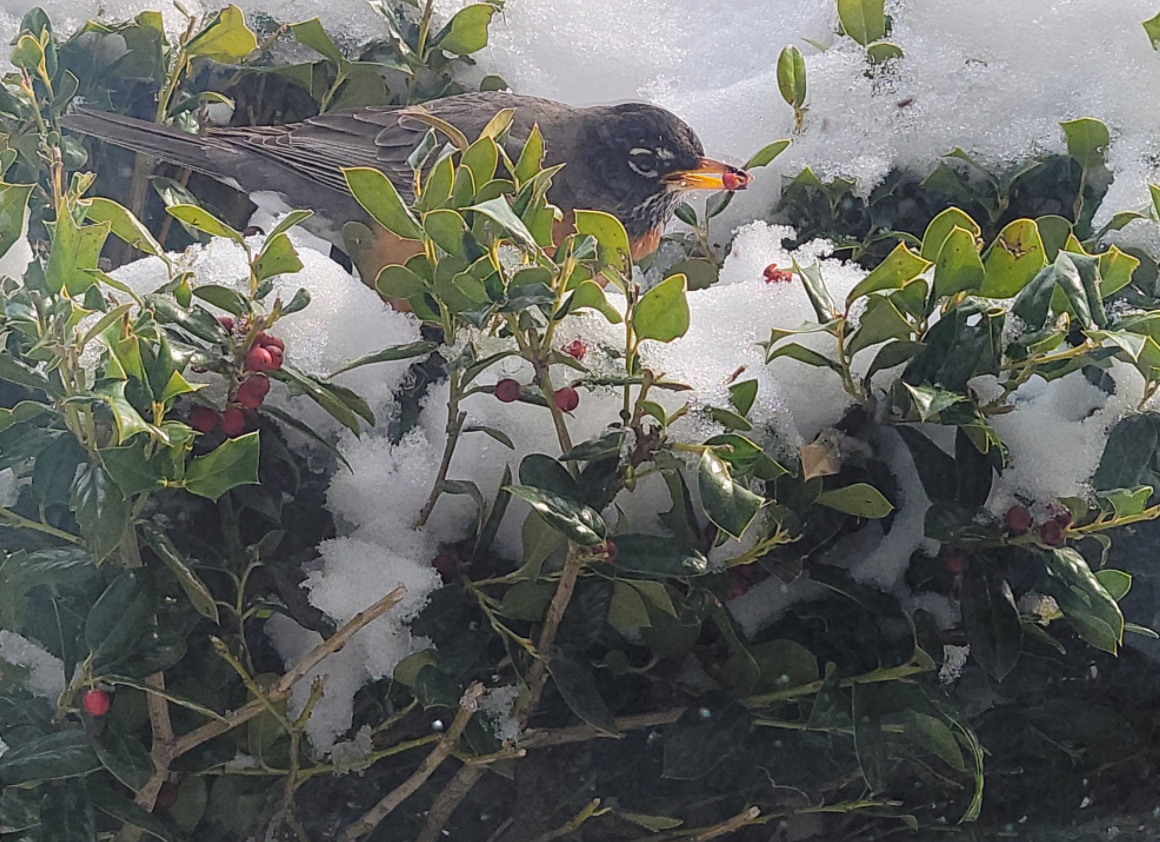
Biologists Examine Winter Weather Impact on Texas Wildlife
AUSTIN – As much of Texas has experienced historic winter weather, native wildlife populations throughout the state have also felt the impact. Texas Parks & Wildlife Department (TPWD) reminds the public that many native wildlife species will survive short durations of historic low temperatures and snow events. However, long-term impacts on various wildlife and their habitats, especially on vegetation, may not be known for weeks.
Native Texas mammals, including white-tailed deer and coyotes, grow heavier winter coats to survive the colder weather. These winter coats are generally thicker and have a well-developed underlayer.
Like bats, other mammals often migrate to where insects, a common food source, are or hibernate to wait out the winter, depending on the species. Bats that choose to hibernate will find a suitable cave or culvert to settle in. Squirrels will rely on food caches and nests to survive during the winter months.
Birds have several strategies to help them survive cold weather. Multiple species will “fluff-up” their feathers to trap warm air. Birds will also flock to food sources to build up their energy reserves. Those that can build up fat stores and have had consistent, reliable sources of nutrition and suitable habitats are generally healthy and will make it through the winter. However, those that have little fat could have a more difficult time surviving the freezing temperatures.
TPWD staff reports the following observations and the public regarding bird health and mortality due to the winter weather:
- They have observed the mortality events in early-arriving bird species such as purple martins and other passerine species. These events have been more prevalent in areas where historic snowfall covered seed resources and experienced stable, below-freezing temperatures.
- TPWD staff have observed waterfowl mortality events due to freezing conditions in wetlands on some TPWD Wildlife Management Areas.
- Bird feeders are being heavily relied upon by various species in areas with a sudden decrease in local food resources due to snowfall.
- Biologists have reported that birds are congregating near roads due to melted snow and ice, increasing water availability. It has increased wildlife-vehicle collisions.
During cold weather, many fish slow down and head for deeper waters where it’s somewhat warmer. Unfortunately, fish in shallow water, especially in our coastal areas, may not survive a hard freeze, resulting in large ‘fish kills’ during cold snaps. The TPWD Kills and Spills team collects data on these events to assess Texas fish populations’ overall impact.
When temperatures on the coast fall below freezing, TPWD may close certain areas to saltwater fishing, as is already the case this year.
Alligators should survive well with short snaps of freezing water. We will not know Long-term impacts on alligator populations until TPWD staff and landowners can survey their properties when conditions improve.
Sea turtles can become cold-stunned when water temperatures drop. It leaves them lethargic and unable to move into deeper water which results in stranding. TPWD Coastal Fisheries Biologists and Texas Game Wardens have assisted in multiple sea turtle rescue operations since Feb. 14 near the Brownsville Ship Channel and surrounding bays and near Matagorda Bay. Once we rescue the sea turtles from the water, we transport them to the proper facility. When temperatures warm, we can safely release the sea turtles.
If you see a cold-stunned sea turtle, please call 1-866-TURTLE5.
As the cold weather continues, along with the continued potential for freezing precipitation, the availability of high-quality wildlife habitat will be critical for many species to survive through this week’s weather in some locations across the state.
TPWD staff will keep monitoring the impacts of this historic weather event on wildlife. When TPWD operations can return to normal, we will continue to update the public on the state’s wildlife resources.








 EastTexasRadio.com Powered by Ten Stations
EastTexasRadio.com Powered by Ten Stations




